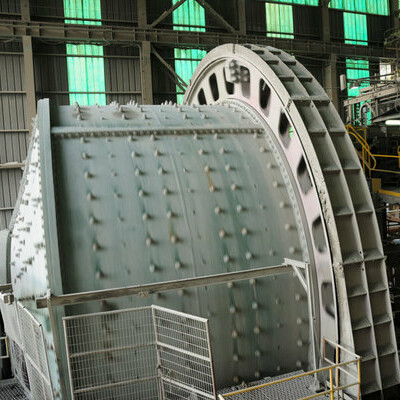How it works
A ball mill constitutes a rotating, horizontal steel cylinder, often called the drum, which contains steel or ceramic balls of 25–150 mm in diameter. It can also be operated under dry or wet conditions.1,2
Relationship between rotation speed and impact/shear forces
At low speeds or when small balls are used, shear forces predominate. At low rotation speeds, the balls are not lifted very far up the wall of the cylinder and tumble over each other as they roll down.
With larger balls, or at higher rotation speeds, impact forces become more important during ball milling. Impact forces are used to produce very fine powders. Above a certain critical speed, the balls will be carried around against the cylinder wall under the influence of centrifugal force and comminution or disintegration ceases.1,2
Ball mills should not be confused with rod mills. A rod mill has rods instead of balls to overcome problems associated with the balls sticking to adhesive foods.
Application
Ball mills can be designed as either batch or continuous equipment. In the latter case, the feed material flows steadily through the revolving shell. It enters at one end through a hollow drum and leaves at the other end through the drum or through peripheral openings in the shell.
Types of ball mills according to equipment characteristics
Ball mills can be classified into two categories:
- Vibration ball mill
- Attritor ball mill
In the vibration ball mill, the shell containing the balls is made to vibrate by means of out-of-balance weights attached to each end of the shaft of a double ended electric motor. In such mills, impact forces predominate and very fine grinding is attainable.1,2
The attritor ball mill consists of a stationary cylinder filled with balls. A stirrer keeps the balls and feed material in slow motion generating shear and some impact forces. It is best suited for wet milling and may be operated batch-wise or continuously. This type of mill is used in the chocolate making industry.1,2
References
- Saravacos, G., and Kostaropoulos, A.E. “Mechanical Processing Equipment.” Handbook of Food Processing Equipment, 2nd Edition, Springer International Publishing Switzerland, 2016, pp. 149–232.
- Reza Zareifard, M., Esehaghbeygi, A., and Allah Masoumi, A. “Size Reduction Process Design.” Handbook of Food Process Design, Blackwell Publishing Ltd., 2012, pp. 919–966.

